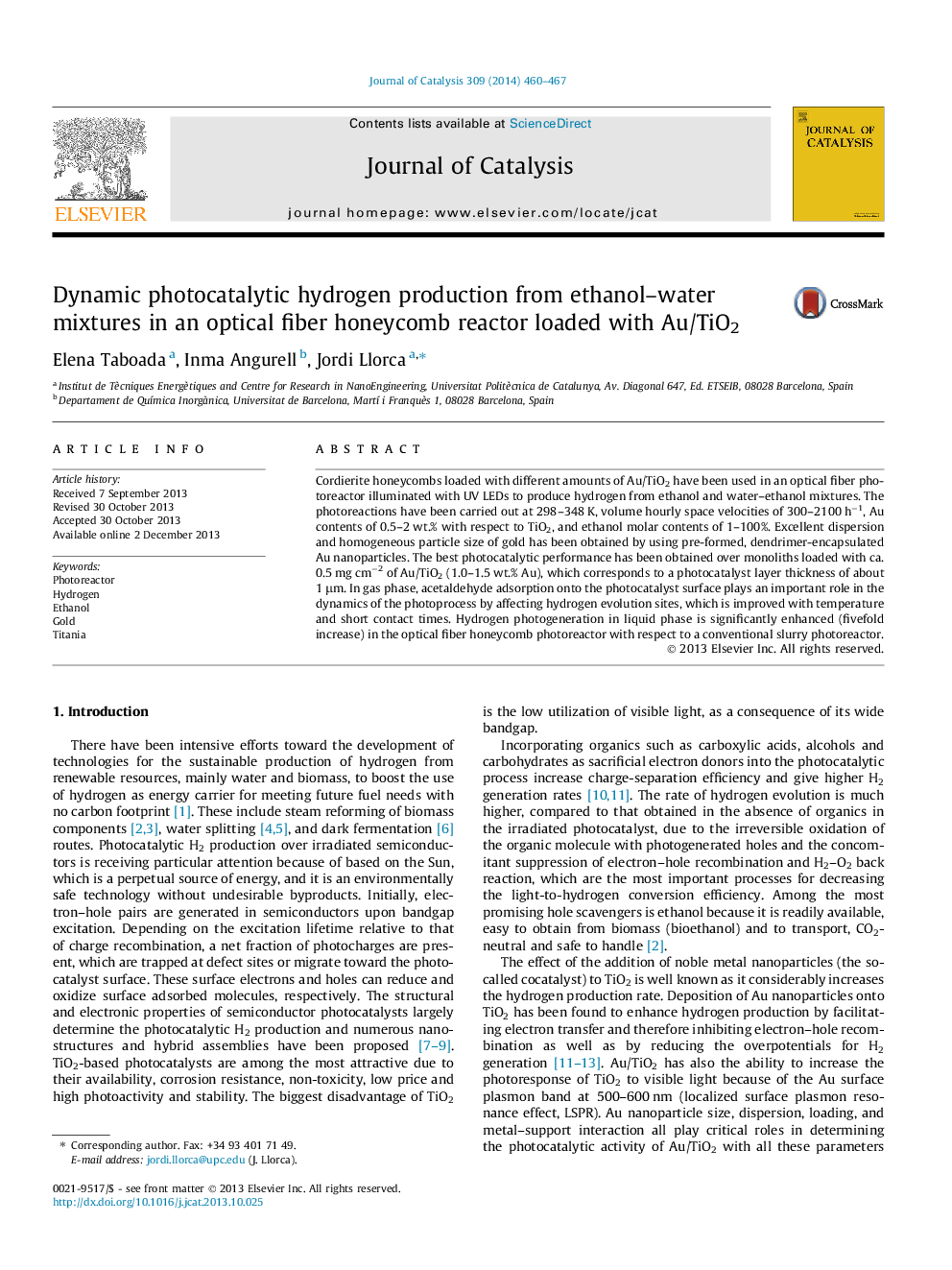| Article ID | Journal | Published Year | Pages | File Type |
|---|---|---|---|---|
| 61136 | Journal of Catalysis | 2014 | 8 Pages |
•Photogeneration of H2 from water–ethanol is enhanced in optical fiber honeycombs.•Au/TiO2 layer thickness of 1 μm is optimum for 0.2 mW cm−2 photon delivery.•The photoproduction of H2 is markedly influenced by temperature and contact time.•Evolution of photogenerated H2 is strongly affected by acetaldehyde adsorption.•Close surface sites are involved in hole scavenging and proton reduction.
Cordierite honeycombs loaded with different amounts of Au/TiO2 have been used in an optical fiber photoreactor illuminated with UV LEDs to produce hydrogen from ethanol and water–ethanol mixtures. The photoreactions have been carried out at 298–348 K, volume hourly space velocities of 300–2100 h−1, Au contents of 0.5–2 wt.% with respect to TiO2, and ethanol molar contents of 1–100%. Excellent dispersion and homogeneous particle size of gold has been obtained by using pre-formed, dendrimer-encapsulated Au nanoparticles. The best photocatalytic performance has been obtained over monoliths loaded with ca. 0.5 mg cm−2 of Au/TiO2 (1.0–1.5 wt.% Au), which corresponds to a photocatalyst layer thickness of about 1 μm. In gas phase, acetaldehyde adsorption onto the photocatalyst surface plays an important role in the dynamics of the photoprocess by affecting hydrogen evolution sites, which is improved with temperature and short contact times. Hydrogen photogeneration in liquid phase is significantly enhanced (fivefold increase) in the optical fiber honeycomb photoreactor with respect to a conventional slurry photoreactor.
Graphical abstractFigure optionsDownload full-size imageDownload high-quality image (124 K)Download as PowerPoint slide
